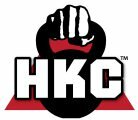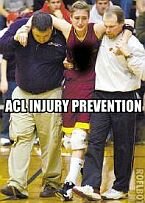Tennis Training and Injury Prevention
Summary of the Strength and Conditioning Journal
Volume 31 Number 4 August 2009 (pp. 5 - 97)
Editor's Notes (p. 14)Tennis requires "all the major components of fitness: strength, speed, agility, power, muscular endurance, anaerobic endurance, and aerobic endurance."
"Players often hit serves in excess of 120 miles per hour and make explosive changes of direction every 3 to 5 steps, all while still having to maintain exceptional balance and coordination to allow for efficient summation of forces through the kinetic chain-imparting power and spin into every tennis stroke."
"The importance of the strength and conditioning professional in the current and future development of tennis players is paramount to the overall success of on-court tennis performance."
A Review of the Activity Profile and Physiological Demands of Tennis Match Play (pp15-26)
- Short bouts of high intensity movement: 4 - 10 seconds
- Average directional changes per point = 4
- Average running per shot = 3 meters
- Average running per point = 8 - 15 meters per point
- Average running per hours = 1300 m - 3600 meters
- Average strokes per rally = 3
- 80% of movement is < 2.5 m, 10% 2.5 m - 4.5 m, 5% > 4.5 m.
- Average match 1.5 hours
- Average rest between points = 20 seconds
- Average rest between changeovers = 90 seconds
- Average rest between sets = 120 seconds
Improve ability to repeatedly perform high intensity exercise between 5 sec. and 50 seconds and recover rapidly
Heat and Hydration Considerations for Junior and Collegiate Tennis Players (pp. 27-34)
"The demands of tennis, particularly during multi-day tournaments, predispose players to increased core body temperature and large fluid losses. This combination of factors can lead to decreased performance and exertional heat illnesses such as heat cramps, heat syncope, or heat exhaustion. By identifying individual fluid and salt needs, designing a replacement plan, and reducing core body temperature during and between matches, athletes can optimize performance while minimizing risk of heat illness."
- Exercise induced muscle cramps - predisposing factors: exercise induced muscle fatigue, body water loss, and large sweat sodium loss.
- Stay hydrated all the time.
- If you are salty sweater, add half teaspoon (1 gram) salt to 32 oz. sports drink.
- For those prone to cramping, add 1/4 teaspoon salt to 32 oz sports drink during play.
"The design of strength and conditioning programs specific to tennis has received significant attention, particularly over the past 25 years. Much of the available research is based on our knowledge of the physiological demands of tennis. Less is known about the link between the actual strokes (serves, forehands, and backhands) and the specific training methods needed for optimal performance of these strokes. In fact, most of the biomechanics literature specific to tennis has focused on the areas of performance, physical stress, and equipment design. This review will focus on the game's most important stroke, the serve, and recommend specific strength training exercises to help optimize performance of this stroke."
- The player uses the ground reaction force as the base of the stroke.
- There is strong leg drive beginning with adequate knee bend.
- The hips and trunk have a counter rotation in cocking away from the court.
- The scapula and shoulder move together to reach a position of maximum external rotation in cocking.
- The arm exhibits long axis rotation, which is a coupled motion including shoulder internal rotation and forearm pronation.
- Preparation phase - Calf, thigh, and buttocks contract eccentrically
- Acceleration phase - concentric contraction calf, thigh, buttocks, pectorals, abdominals, biceps)
- Follow-through - eccentric contraction calf, thigh, buttocks, rotator cuff, trapezius, rhomboids, back extensors
- 51% of energy legs/trunk, 13% shoulder, 21% elbow, 15% wrist
- Medicine ball squat thrust and backward throw
- Sit up on ball with medicine ball pass
- Medicine ball rotation toss while seated on ball
- Side Plank
- Side Plank with one arm row
- Standing ball throw against wall with shoulder and elbow at 90 degrees
- Ball throw while seated with forearm on thigh
"The purpose of this article was to summarize recent research related to the biomechanics of tennis technique in groundstrokes and then to recommend specific strength and conditioning exercises that would tend to improve tennis performance and prevent injury. Based on the available research, it was determined that training exercises should emulate the sequential coordination involved in ground stroke production, as well as stabilizing musculature that might be involved in developing force or in protecting body parts from stressful actions. Specific exercises based on the findings in the research literature were then offered."
- Vigorous hip and trunk rotation transfer energy from the lower extremities to the racquet side arm
- Forehand
- Ground reaction force as the base of the stroke.
- Strong leg drive off the back leg.
- Trunk rotation around the back leg.
- Long axis rotation of the entire arm so that the elbow points towards the path of the hit ball.
- Forehand - trunk rotation, horizontal shoulder adduction, shoulder internal rotation
- Strong leg drive off the back leg.
- Trunk - counter rotation away from the court.
- For the 1-handed backhand, trunk and front shoulder rotation into the shot.
- For the 2-handed backhand, trunk rotation into the shot.
- Medicine ball side catch and toss while running back, forward, to side, against wall
- Cable rotation
- Wrist roller
- Forearm pronation/supination
"A tennis-specific strength and conditioning program can play a key role in preventing common injuries in tennis players. The information provided in this article identifies common tennis injuries and the tennis demands and muscular imbalances that may play a role in causing them. Specific exercises are suggested based on these sport-specific muscular imbalances that have a goal of both preventing injuries and enhancing a player's performance."
- Lower body - ankle sprain and hamstring, quadriceps, adductor strains
- Upper body - shoulder and elbow strains
- Trunk - lower back strains
- Rotator cuff
- Elbow
- Core
http://esciencenews.com/articles/2009/11/09/young.tennis.players.who.play.only.1.sport.are.more.prone.injuries
The Progressive Physical Development of a High-Performance Tennis Player (pp. 59 - 68)
"At what age should children strength train for sport? Children are dropping multisport participation at an early age to play sports such as tennis year round. This presents a unique challenge to strength and conditioning professionals who are responsible for enhancing performance while ensuring injury prevention. This article provides a framework of a logical progression of exercises for athletes moving from prepuberty to adulthood. These exercises are the groundwork in the physical development of an elite tennis player."
Planning and Periodization for the Elite Junior Tennis Player (pp. 69 - 76)
"Elite junior players train in structured high-performance programs, aspiring toward professional success, from a relatively young age. Where immediate performance enhancement in the physical domain is sought, arguably more important is the preparatory work required to withstand the rigors of the professional tour. This article provides an insight into how the programming challenges of tennis-year-round competition, constant travel, irregular playing times, and an uncertain number of matches-can be met with a 17- to 18-year-old male player."
Movement for Tennis: The Importance of Lateral Training (pp. 77 - 85)
"Tennis is a sport that requires hundreds of directional movement changes during every match and practice. The majority of movements in tennis are in a lateral direction, and the development of the muscles, movements, and neural responses needs to be a focus of all tennis training programs. This article highlights the typical movements during tennis play, which in many respects are unique to tennis, and practical examples of exercises to help train lateral movements are provided."
Preseason Strength and Conditioning for Collegiate Tennis Players (pp. 86 - 93)
"Tennis has been characterized as a fast-paced game that requires precise movement coordination, agility, explosive strength, endurance, and strategic skill mastery. These outcomes can be achieved by adhering to an annual plan consisting of various phases. The objectives of this article are to briefly review off-season strength training; to provide an in-depth examination of preseason strength and power training; and to review preseason general and sport-specific conditioning."
Mental Skills Training for Tennis Players: An Added Skill Set for the Strength and Conditioning Coach (pp. 94 - 97) "With the performance demands placed on young tennis players, there appears to be notable parental pressure placed on junior players as parents pour significant resources into their children's games. This article is written to enhance strength coaches' understanding of the parent-athlete culture and to offer them tools and strategies to enhance performance and reduce parental control."
|
The Ultimate Nutritional Lie Detector Test LEARN MORE 
|
Kettlebell Rehab

Click Here
To See How Kettlebells will transform your body!
Vortex Rehab

Click Here
To See How This
Revolutionary Machine
Can Help You!
Partner / Support

Loans up to 3 months - fast cash advances for up to 90 days and up to $5,000!


















